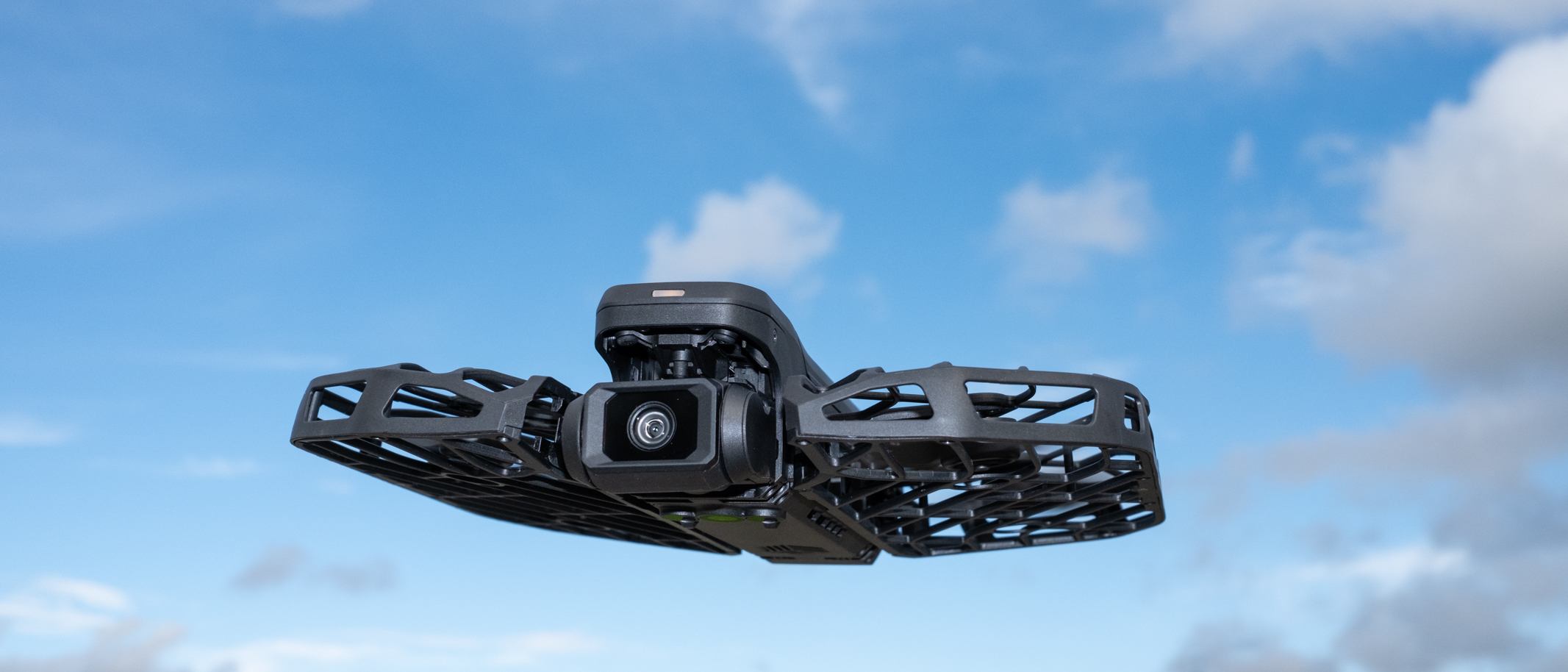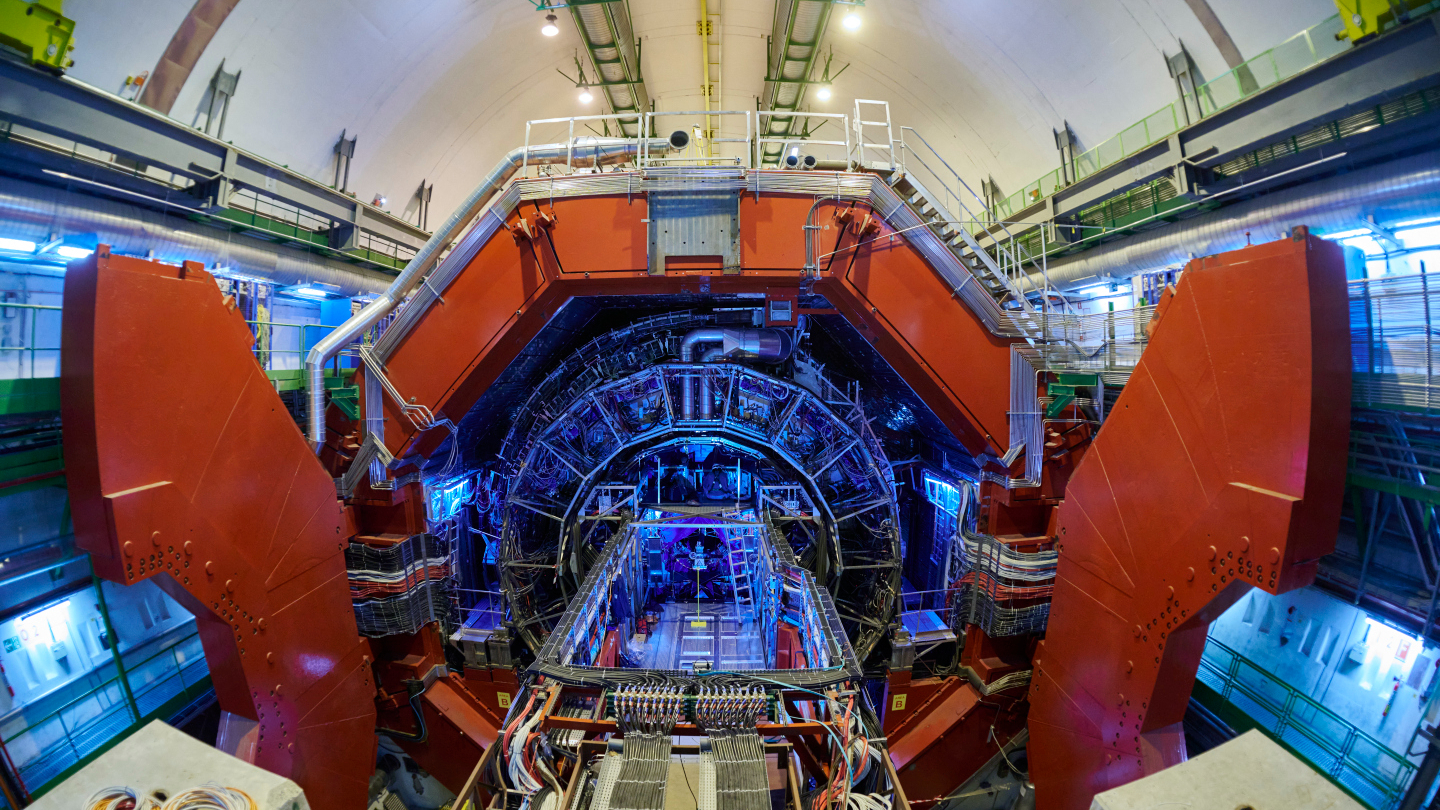Space Verdict
The HoverAir X1 PRO is an impressive selfie and personal tracking drone. Its performance is impressive, and it captures great 4K video and JPEG photos.
Pros
- +
Incredibly easy to use
- +
Great manual flight performance
- +
Subject tracking is impressive
Cons
- -
Photo quality is OK but not great
- -
Pedestrian manual flight speeds
- -
Certainly not cheap
Why you can trust Space.com
Camera: 1/2in CMOS 17mm lens
Video resolution: Up to 4K
Frame rates: 4K up to 60 FPS / FHD up to 120 FPS / Vertical 2.7K and FHD up to 60 FPS
Battery: 1920mAh / up to 16 minutes flight
Charger type: USB-C cable, Charging hub, 65W Power Adapter
Modes: Manual flight and multiple intelligent flight modes
Video transmission range: Phone app: 1640 ft / 500 m / Beacon and Controller up to 0.62 miles / 1 km
Dimensions: 4.13x5.86x1.34 in / 105x149x34 mm folded / 6.81x5.86x1.53 in / 173x149x39 mm unfolded
Weight: 6.75 oz / 191.5 g
Selfie drones have become a permanent fixture in the drone market, with the HoverAir X1 paving the way for these innovative and intelligent autonomous UAVs. The DJI Neo most recently caught the imaginations of consumers thanks to the operational extensions of the simple selfie drone it delivered, but there are two new selfie drones available from ZeroZero Robotics, the makers of the HoverAir X1, and all four are among the best beginner drones.
The HoverAir X1 PRO, which sits alongside the HoverAir X1 PROMAX — a more advanced 8K model, builds on the technological success of the HoverAir X1 to deliver what could be the best consumer selfie drone available. The PROMAX is the better model of the two in terms of image quality and some features, but it's the 4K PRO that has incredible potential thanks to a lower cost and more manageable video footage for beginners and enthusiasts.
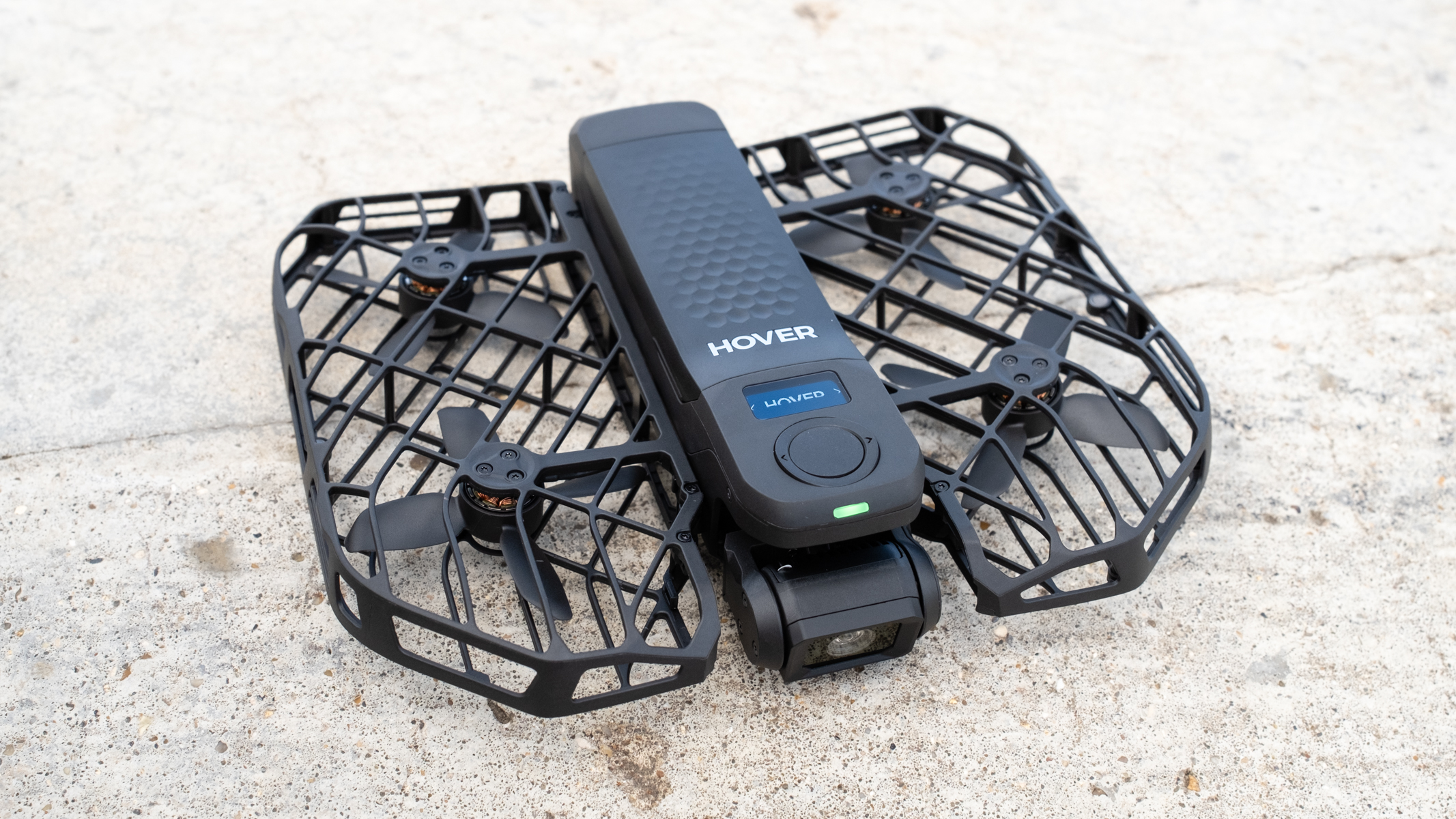
The drone is aimed at tracking snow sports and cycling, but it can be used much more widely than this and the new accessory ecosystem, which includes physical controller options, greatly extends its application.
The X1 PRO offers a variety of autonomous intelligent flight modes, including manual flight. The flight modes can be activated drone-only, with the app, with the Beacon, or with the controller if you choose to buy the physical accessories.
HoverAir X1 PRO: Design
- Lightweight folding design
- Propeller guards for safety
- Fantastic app control
The X1 Pro is a lightweight and compact folding drone that's pretty much pocket size when folded at just 4.13x5.86x1.34 in / 105x149x34 mm folded and 6.81x5.86x1.53 in / 173x149x39 mm unfolded. It's small enough to fit in a jacket pocket and weighs just 6.75oz / 191.5 g, so it's also below the all-important regulator-friendly 250 g threshold. The design is highly similar to the HoverAir X1, with propellers enclosed in propeller guards that fold out from below the airframe. These keep propellers, objects, and people safe when the drone is flying close to obstacles. It's also a minimalistic design with just a single button and two directional buttons around this in a circular design, with an OLED screen above to show the currently selected flight mode.
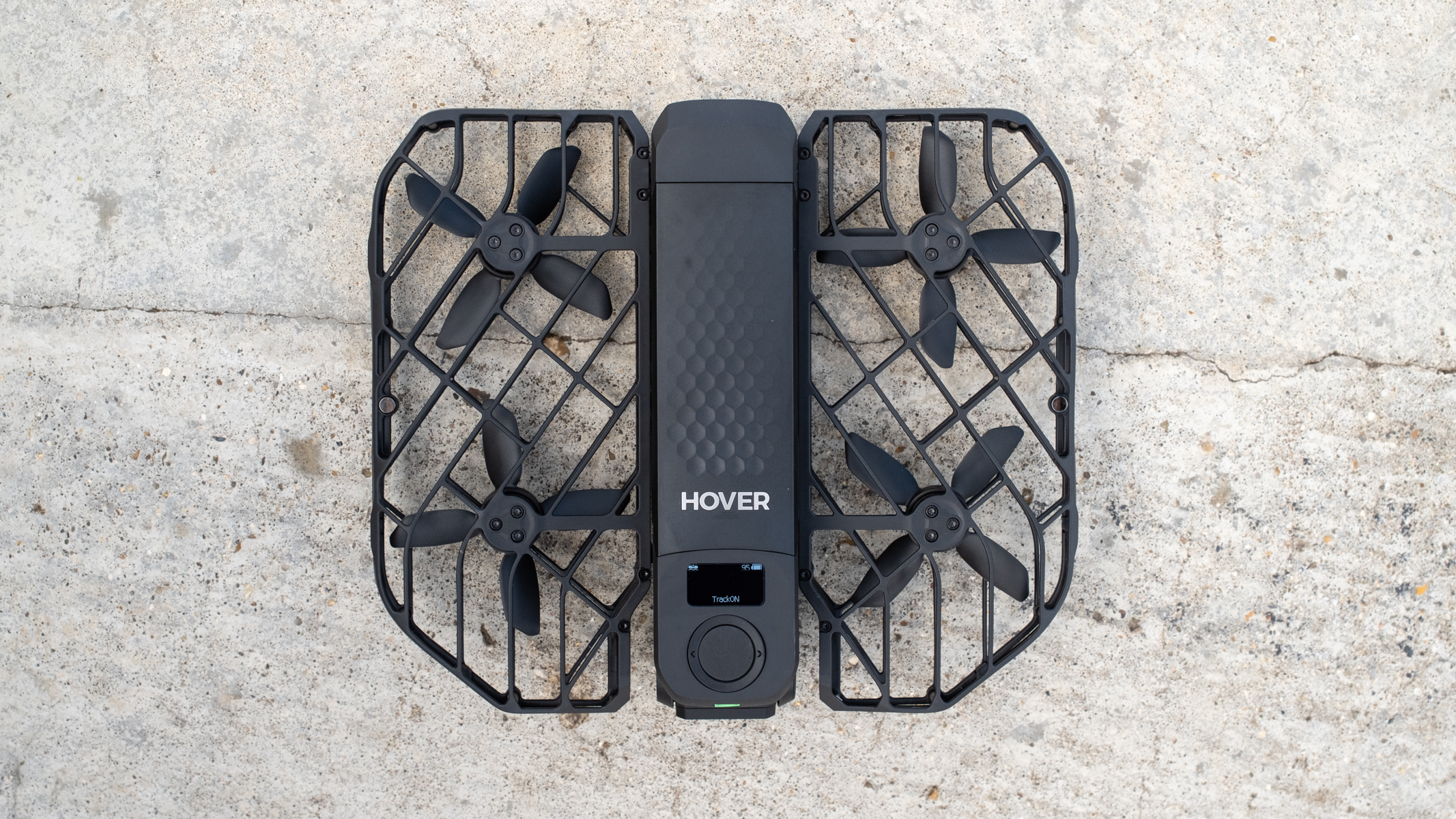
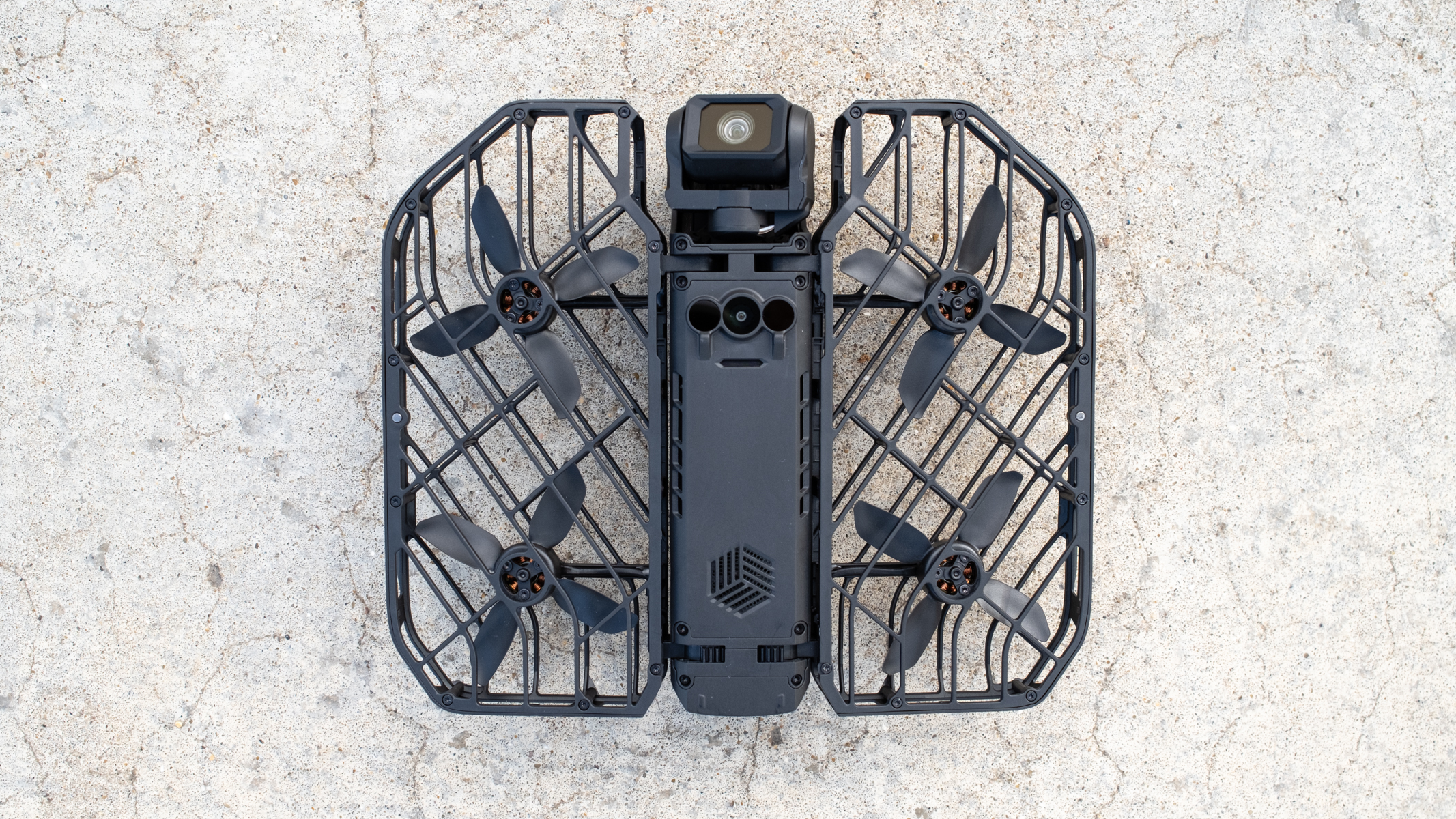
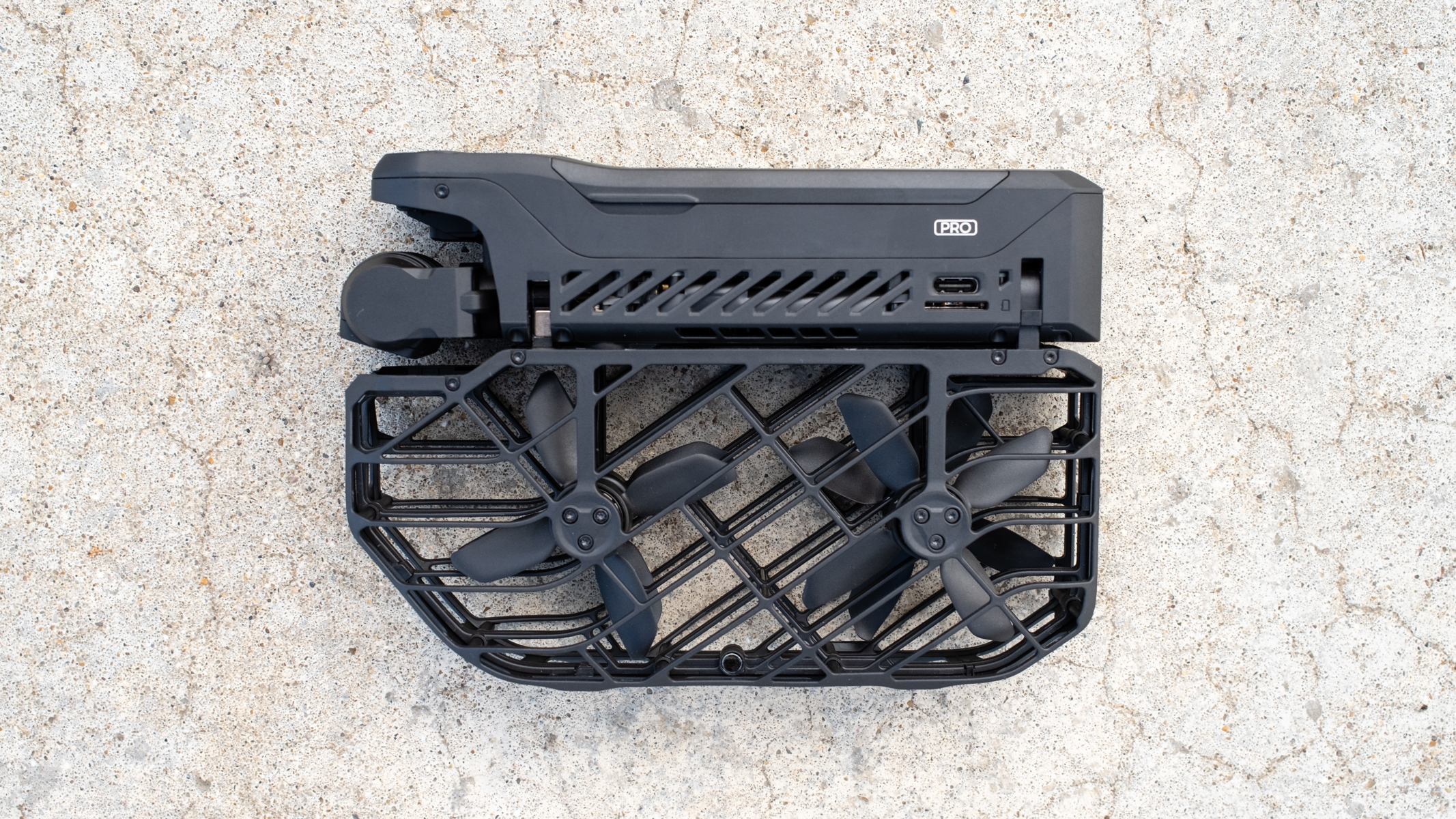
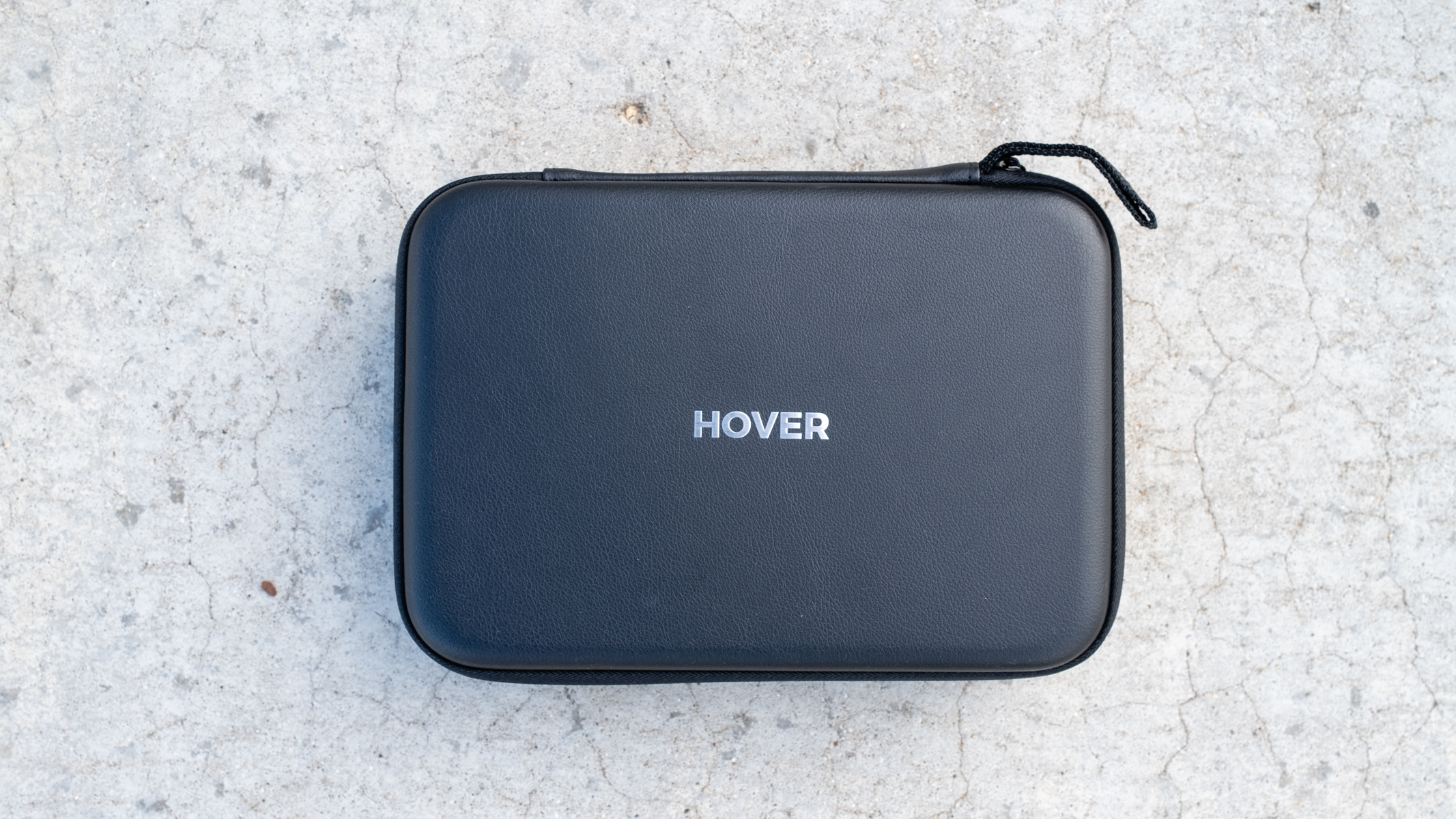
Battery life from the 1920mAh batteries comes in close to the advertised 16 minutes of flight time, which is plenty of time for a drone of this type; you typically don't fly selfie drones for as long as camera drones, instead opting for shorter bursts of tracking and manual flight.
There are also thermal batteries that can be purchased separately for $99 / £89 and these are designed for use in temperatures as low as -4 degrees Fahrenheit / -20 degrees Celsius.
These batteries are essential if you aim to use the X1 PRO for tracking winter sports, and would also be useful for any kind of drone flight with the X1 PRO in winter temperatures. Of course, the normal batteries will work in colder temperatures, but the thermal batteries are going to keep you flying in more extreme conditions.
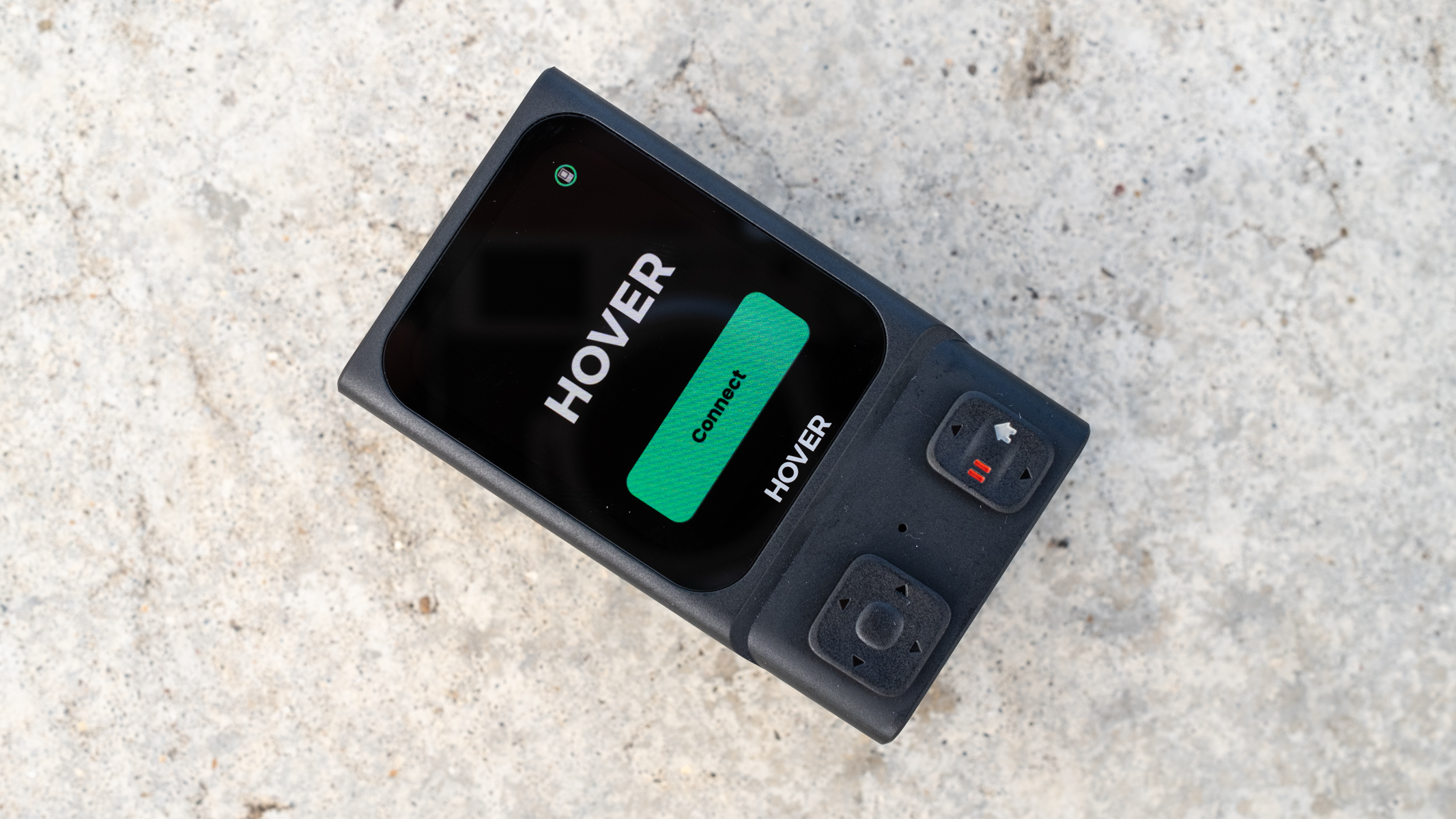
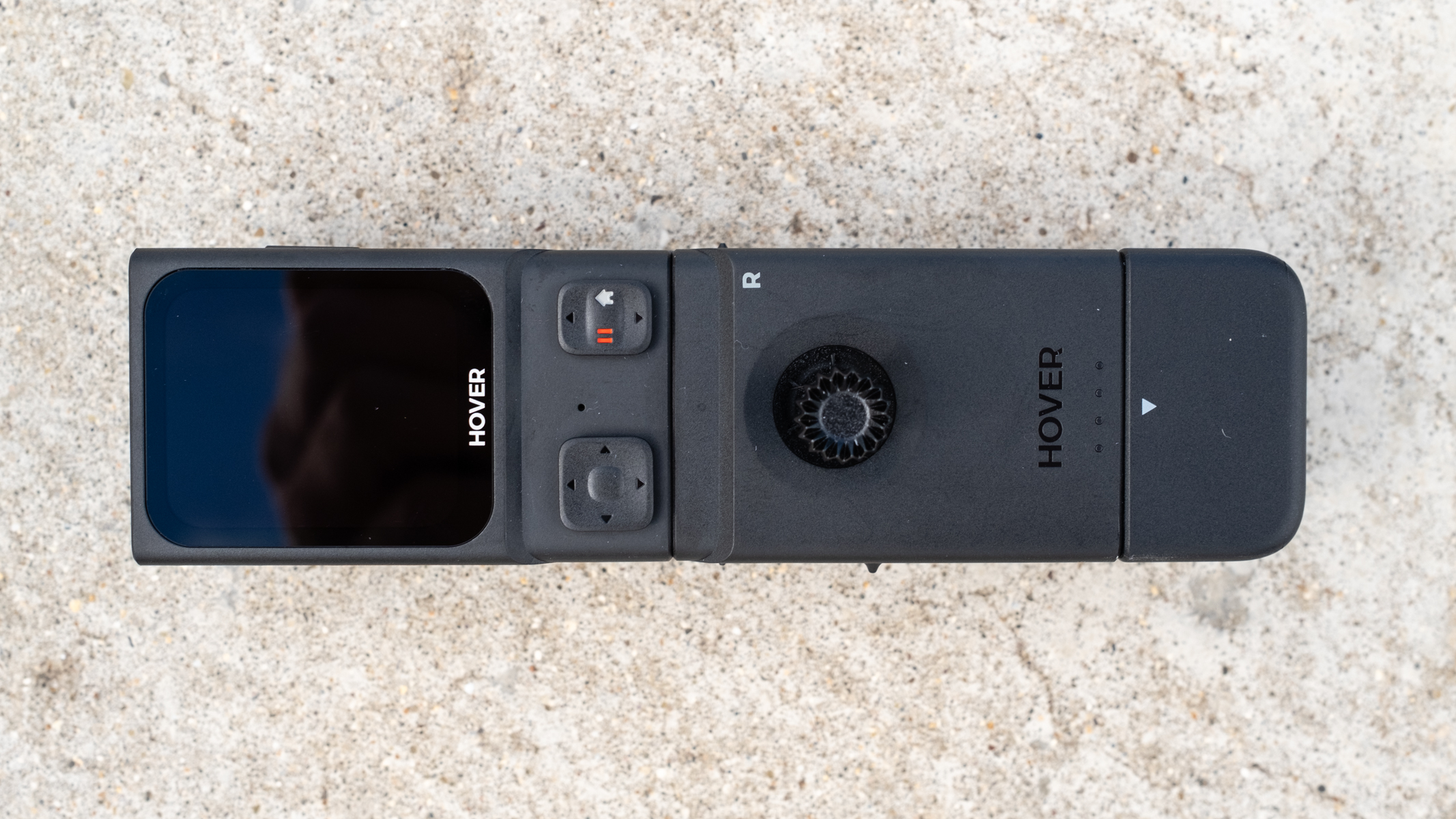
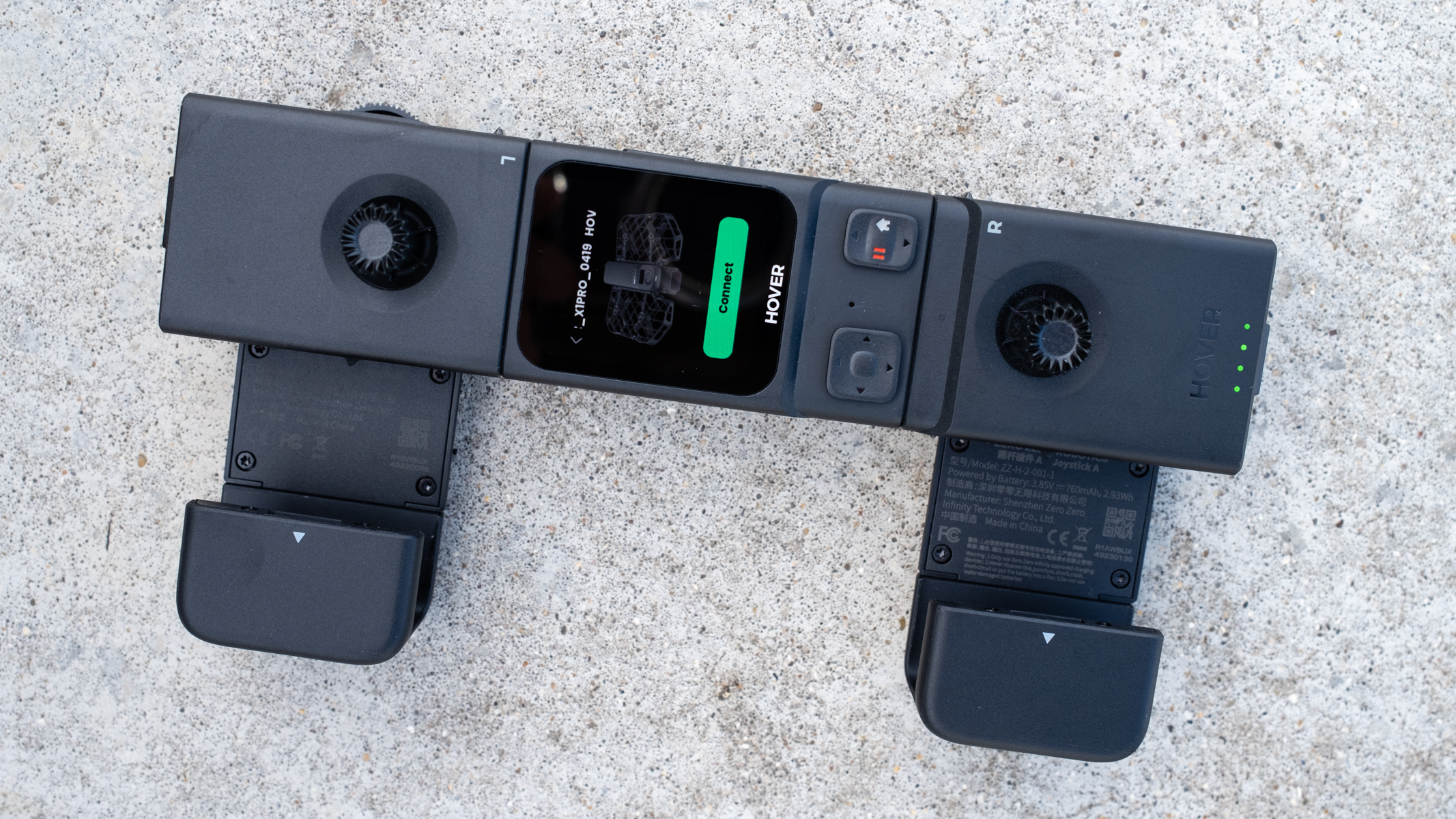
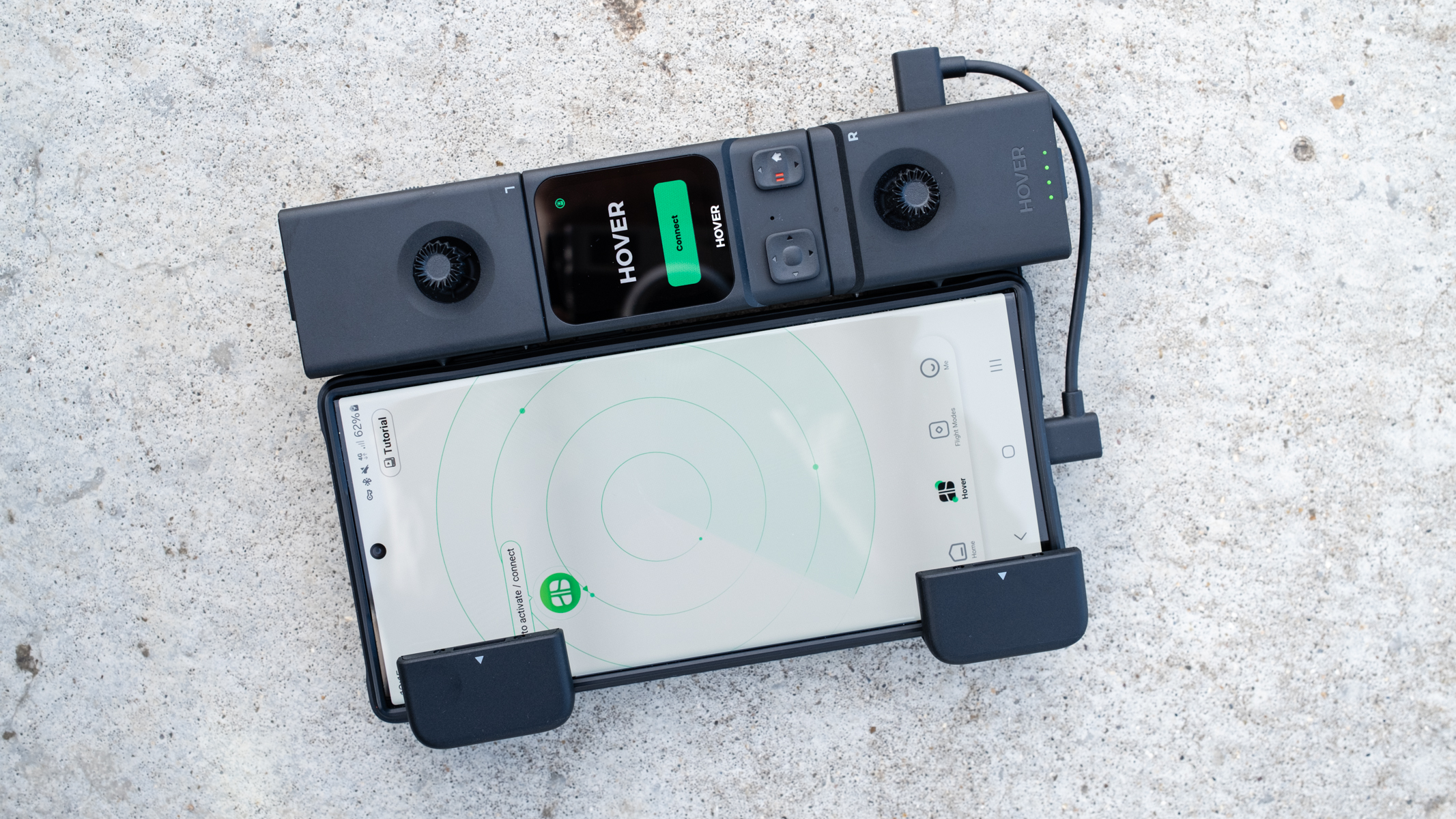
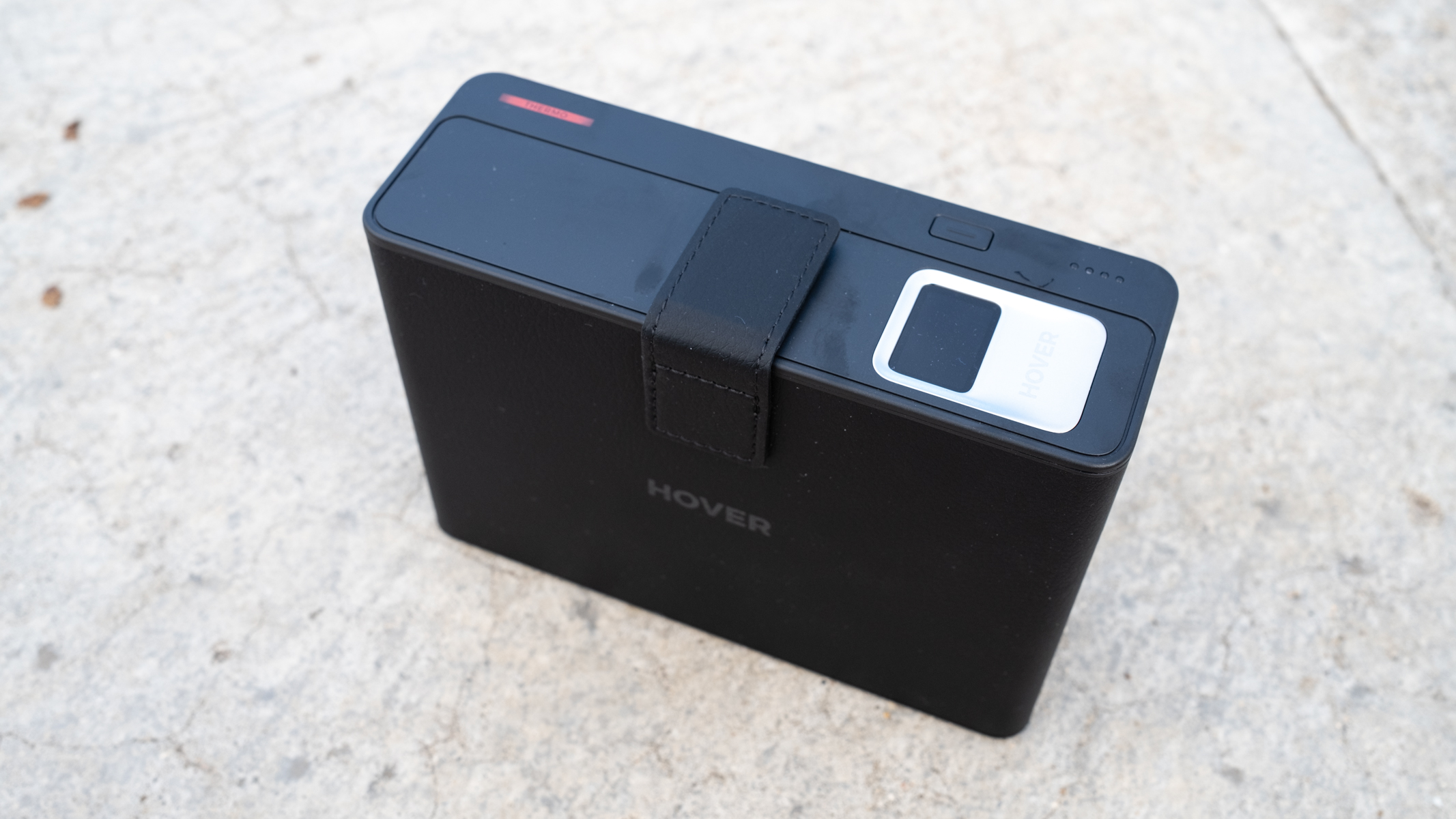
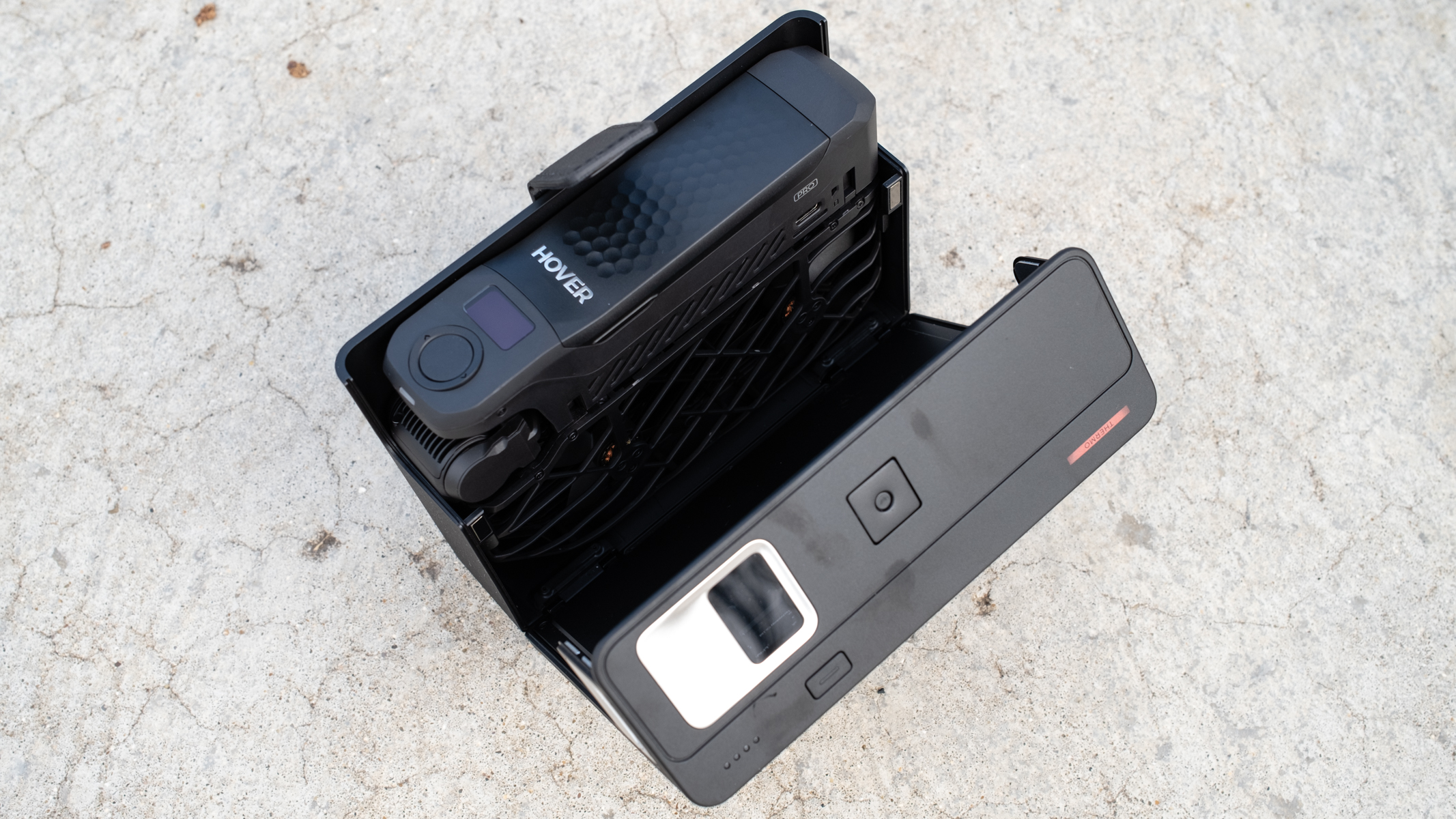
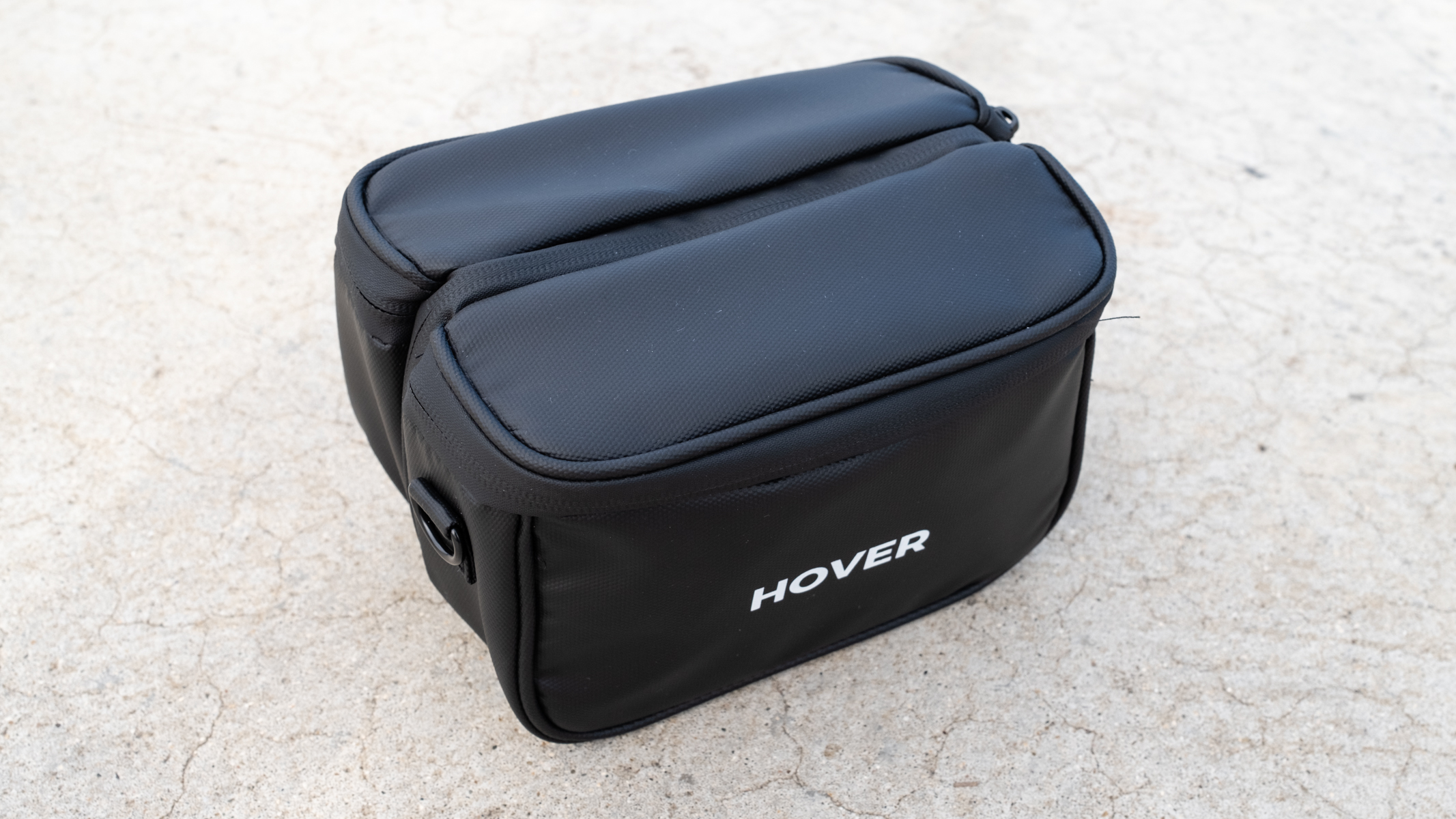
There are several control options available for the X1 PRO, but some of these require additional accessories, some of which we'll cover briefly in the next section. For many users, set up and control will be achieved using the Hover X1 app where you can adjust the parameters of the intelligent flight modes, adjust camera settings, control the drone manually and also share X1 PRO photos and videos to the HoverAir X1 community.
The manual flight interface has undergone fantastic improvements since the original HoverAir X1. Manual control now works in horizontal orientation within the app, which is much more intuitive than portrait orientation with virtual controls overlaid on the large camera view with gimbal control available.
These controls are nothing short of excellent, and although not as effective as a physical controller, you can still achieve complex flight maneuvers using both controls at the same time alongside gimbal movements.
HoverAir X1 PRO: Functionality
- Excellent subject tracking
- Palm take-off and landing
- Excellent accessory options
Setting up for flight is incredibly quick and easy and you can be up and in the air in around one minute using either drone only or the Hover X1 app. All you need to do is fold out the propeller guards from beneath the airframe, switch the drone on and select the desired flight mode.
To take off, you simply press the main button and the X1 Pro will take off from the palm of your hand, and once finished hold your hand below the drone and it will land. The drone features 32GB of onboard storage alongside a microSD card slot that's compatible with cards up to a 1GB capacity.
The feature that defines the X1 PRO is the intelligent flight modes that use advanced AI algorithms to track the subject and to keep them in the centre of the frame. The X1 PRO does a fantastic job when tracking or flying around subjects, and the Follow mode is particularly effective with a flight speed of up to 26mph, and bursts of up to 37mph available.
Whether or not this is truly possible is difficult to say, but when cycling as fast as possible on a mountain bike the drone was able to keep up without any issue. However, with manual flight control, flight speed is extremely pedestrian and remains slow.
This is despite increasing the speed rates for the drones within Joystick settings in the Hover X1 app. Flight and controls are still extremely smooth during manual flight, which is great and it offers a wind resistance Level 5, which equates to 24mph.
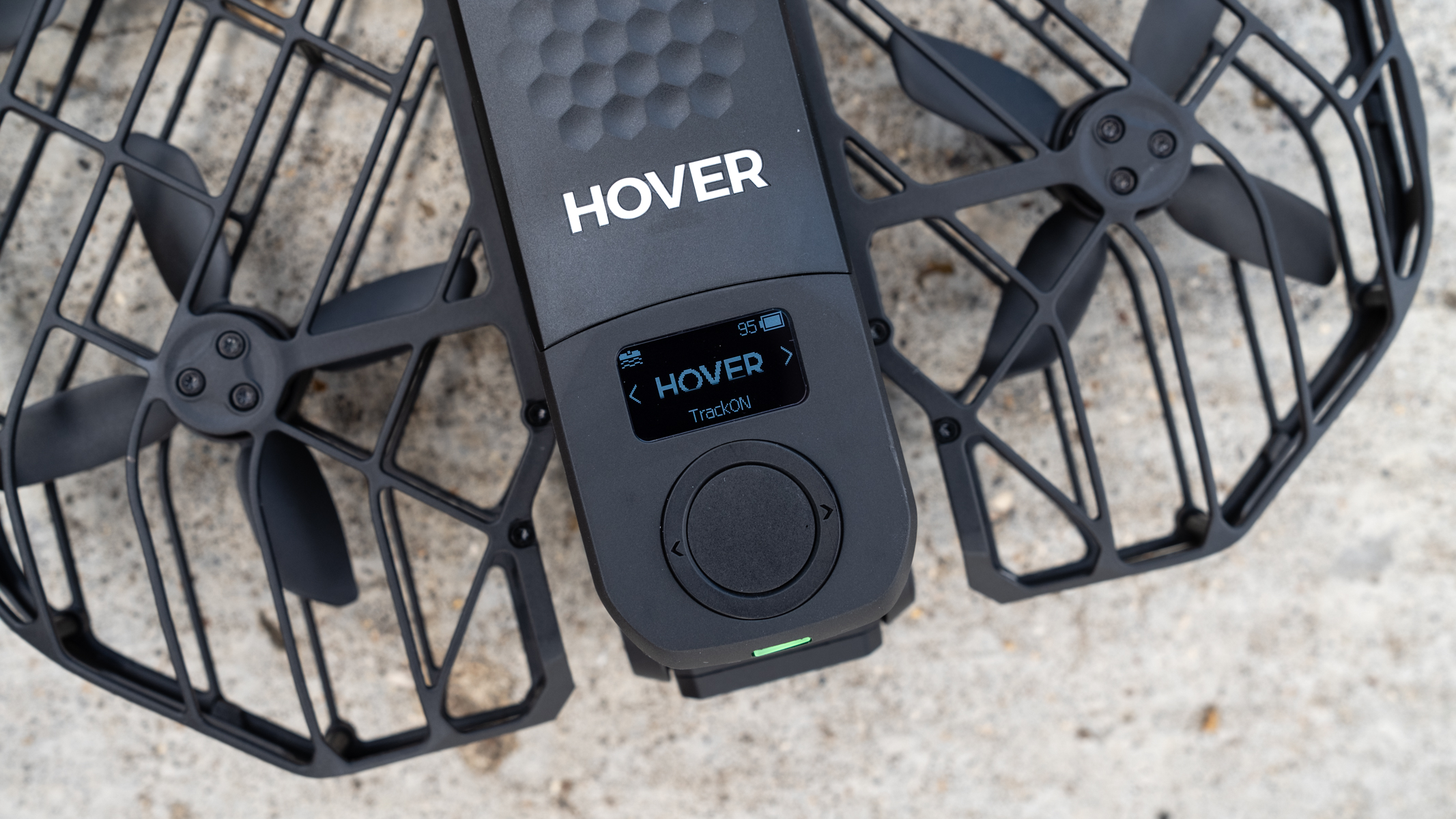
The intelligent flight modes include Hover, Zoom Out, Follow, Orbit, Bird's Eye, Dolly Track and Side Track. The intelligent flight modes are excellent with impressive tracking, but Follow, Dolly Track and Side Track are the most fun and interesting of what's available. The X1 Pro is also able to navigate complex environments with ease with just active rear-side collision detection provided by a proximity sensor.
Other useful features include Return to Home functionality, but without full collision avoidance sensors, you have to take care when using it by watching the video feed for potential obstacles and taking manual control if required. Also, when OmniTerrain is active, the X1 PRO can be flown over water, snow, cliffs and at night, unlike the original HoverAir X1 which cannot do this.
To extend the capabilities of the X1 PRO, the optional accessories are fantastic if you can stretch your budget to include them. Without going into full detail, the Beacon improves tracking capabilities and can be paired with the Joysticks for a one-handed motion controller, used together with the Beacon screen providing the camera view, or all of the above with your smartphone acting as the screen.
These controller options all work exceptionally well and allow for smooth and precise control of the drone. However, when using your smartphone as the screen, you unfortunately can't access or adjust drone or camera settings. This would be fantastic functionality if it could be added with a future firmware update and would further improve the flying, photo and video capture experience.
HoverAir X1 PRO: Performance
- Excellent 4K video quality
- High ISO handling isn’t great
- Photos in JPEG only

The video quality produced by the X1 PRO is far superior to photos, but this is unsurprising given that it's a selfie drone with advanced subject tracking capabilities, primarily for capturing action videos. Photos are absolutely fine when captured at lower ISO settings, but we'll go into more detail about both in a moment.
The X1 PRO features a 1/2in CMOS sensor with an equivalent focal length of 17mm. This is a fantastic wide-angle focal length for a selfie drone that captures both the subject and their environment well. The X1 Pro can be set to follow subjects at different distances, so the wide-angle aspect of the lens makes close following/subject tracking much more effective than a longer focal length.
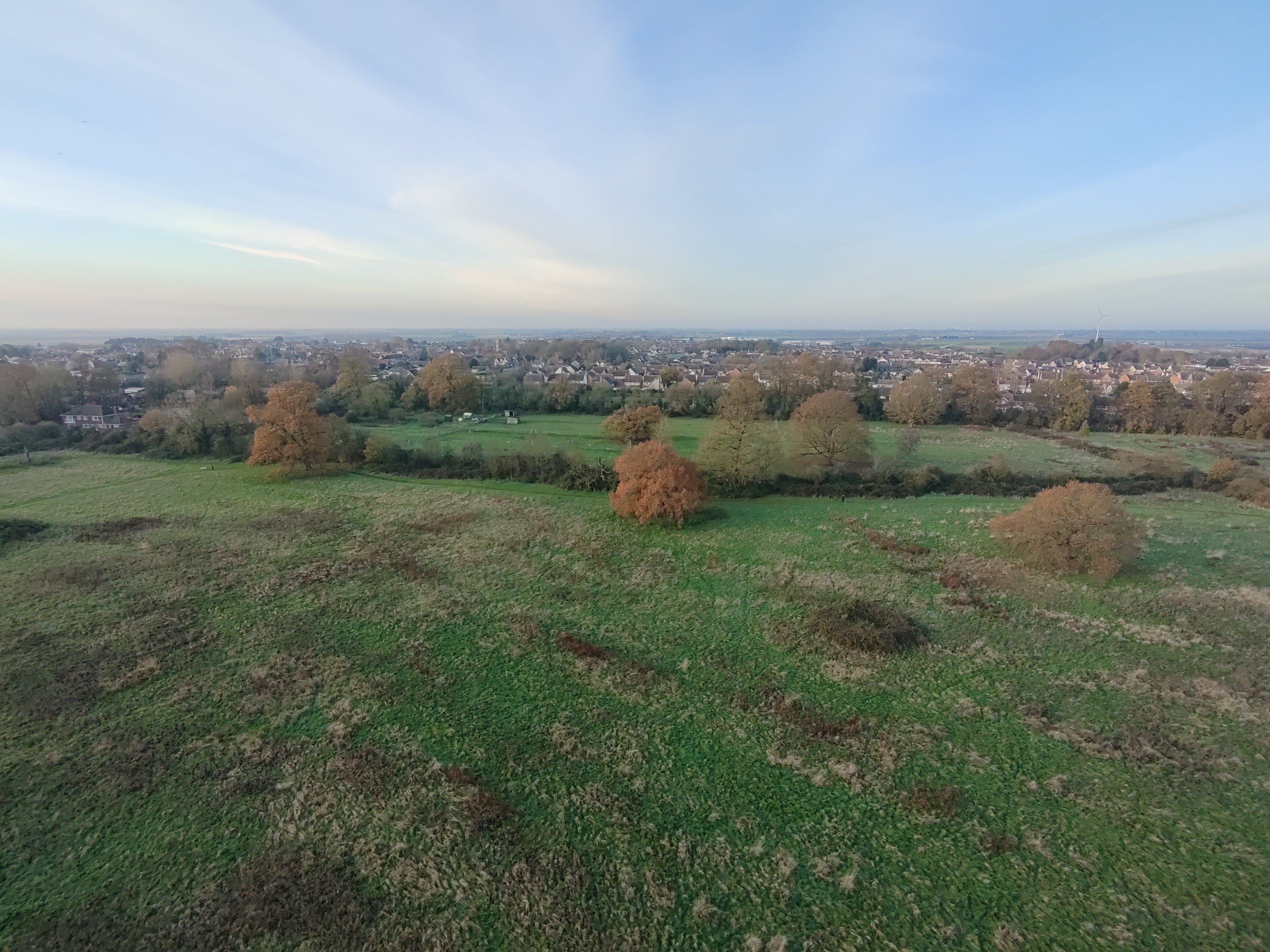
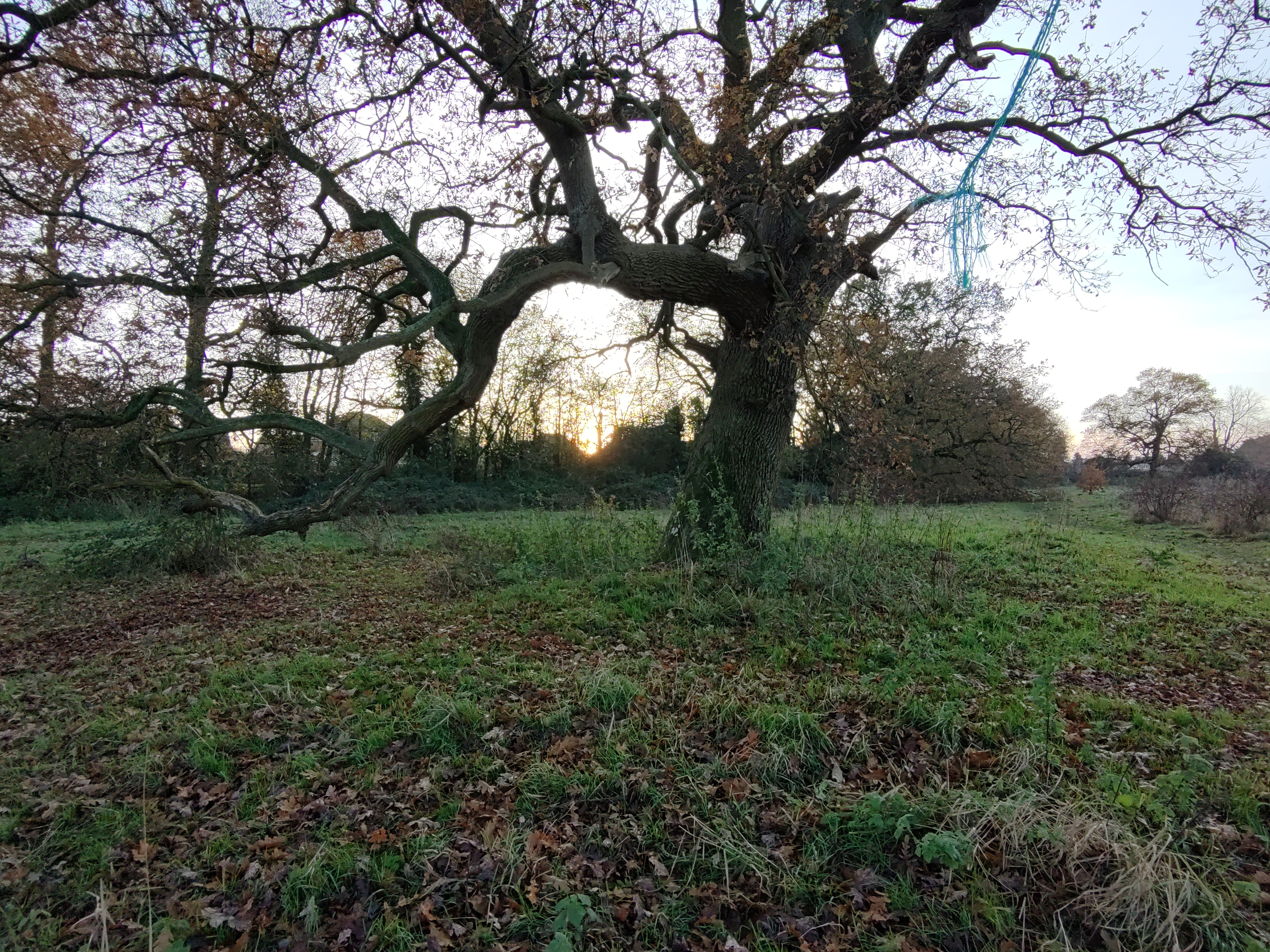
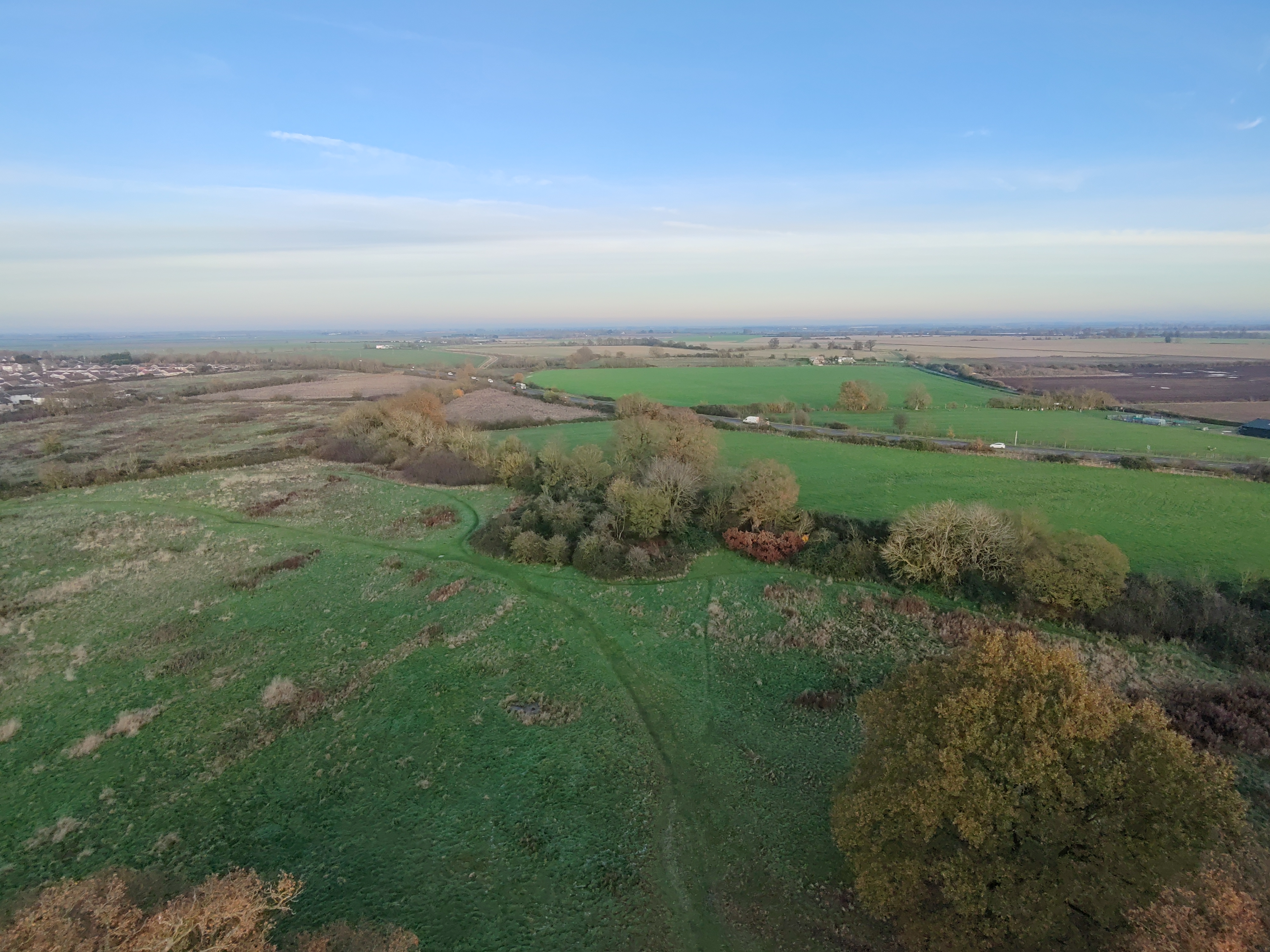
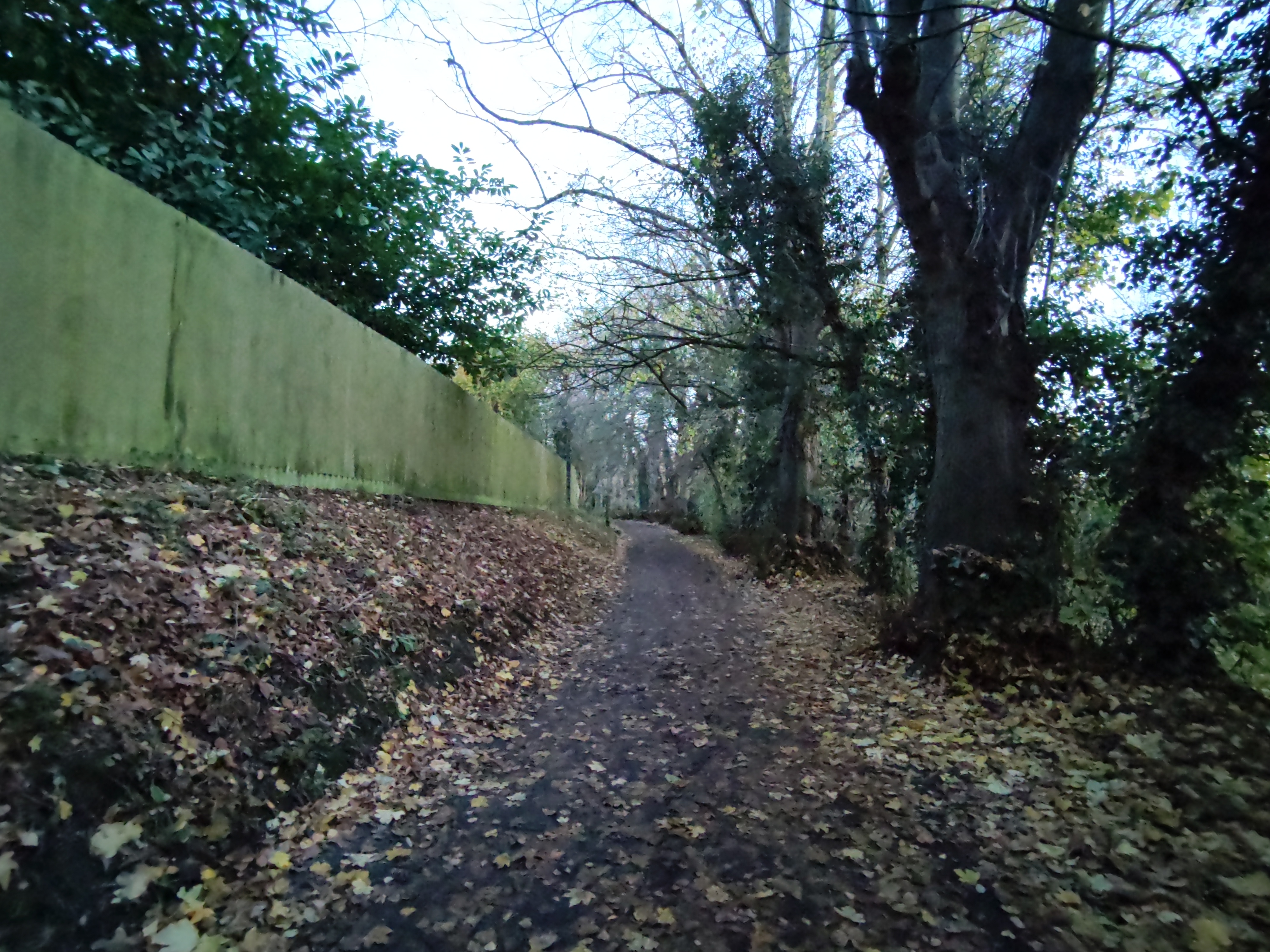

Video can be captured in 4K at up to 60 FPS and 1080p at up to 120 FPS for slow motion capture, which is useful for capturing fast-moving subjects interestingly. You can also capture vertical video, which is cropped on the sensor rather than the camera rotating 90 degrees, and this can be recorded in 2.7K and 1080p at up to 60 FPS.
Please note the footage below was shot in 4K but our video player only plays in HD.
HoverAir X1 PRO intelligent flight modes
HoverAir X1 PRO manual flight
Moving onto photo image quality, this is good but not exceptional and is much better at lower ISO levels since high ISO noise reduction and JPEG processing are strong at higher settings.
The camera only captures photos in JPEG, which is a shame because Raw would open up greater potential for processing and editing, but it's not the end of the world and the X1 PRO is primarily a tracking drone for video capture. Still, it would be great to see this functionality added if possible.
Photos are captured in 4000x3000px dimensions, which equates to 12MP and is large enough to produce prints of up to around A3 size. There's also a 2x zoom that captures in these dimensions, so it must use some kind of in-camera software-based interpolation. Image quality only reduces by a small amount with the 2x zoom, which is impressive overall.
HoverAir X1 PRO: Price
The HoverAir X1 PRO is available in a Standard kit, which includes the drone, one battery, a USB-C cable and a soft storage bag that costs $499 / £459. The Combo kit includes all of the above alongside a second battery, a charging hub, a 65W charger and a combo case for $679 / £629. This kit is ultimately better because of the additional accessories, but neither option is cheap.
There are also useful optional accessories available that enhance drone performance. These include the Beacon and Joystick bundle for $228 / £208, The PowerCase for $169 / £155, the Multi-function Carry Bag for $79 / £69, the HandleBar Mount for $20 / £19 and the ND Filter set for $69 / £65. This certainly drives up the cost of the drone, but they are extremely useful for enhancing the overall HoverAir X1 PRO and PROMAX experience.
Should you buy the HoverAir X1 PRO?
In terms of selfie drones, the HoverAir X1 PRO and PROMAX (we haven’t reviewed the PROMAX) are both the best selfie drones in many respects including size, weight and compact folding design for transportation.
The accessory ecosystem also greatly extends their usefulness, but the drone kits and optional extra accessories are more expensive than the original HoverAir X1 and the DJI Neo.
The HoverAir X1 PRO is, however, and fantastic selfie drone that's packed with impressive technology and does exactly what it's designed to do. Plus, it does it well. So, if your budget allows, it's most certainly a selfie drone option to consider.
If this drone isn't for you
The HoverAir X1 is a more basic selfie drone than the X1 Pro but offers the same intelligent tracking modes for autonomous flight and comes in at a more affordable price.
The DJI Neo, which we reviewed recently, is DJI's first selfie drone with several options for control ranging from drone only, app control, and standard DJI controller, and it can even be flown FPV using DJI FPV accessories.
The DJI Air 3S isn't a selfie drone, it's a mid-sized camera drone, but it offers excellent subject-tracking capabilities making it a versatile option to consider.
Join our Space Forums to keep talking space on the latest missions, night sky and more! And if you have a news tip, correction or comment, let us know at: community@space.com.
James is an award-winning freelance landscape and portrait photographer, as well as a highly experienced photography journalist working with some of the best photography magazines and websites with a worldwide audience. He’s also the author of The Digital Darkroom: The Definitive Guide to Photo Editing. www.jamesaphoto.co.uk
You must confirm your public display name before commenting
Please logout and then login again, you will then be prompted to enter your display name.
